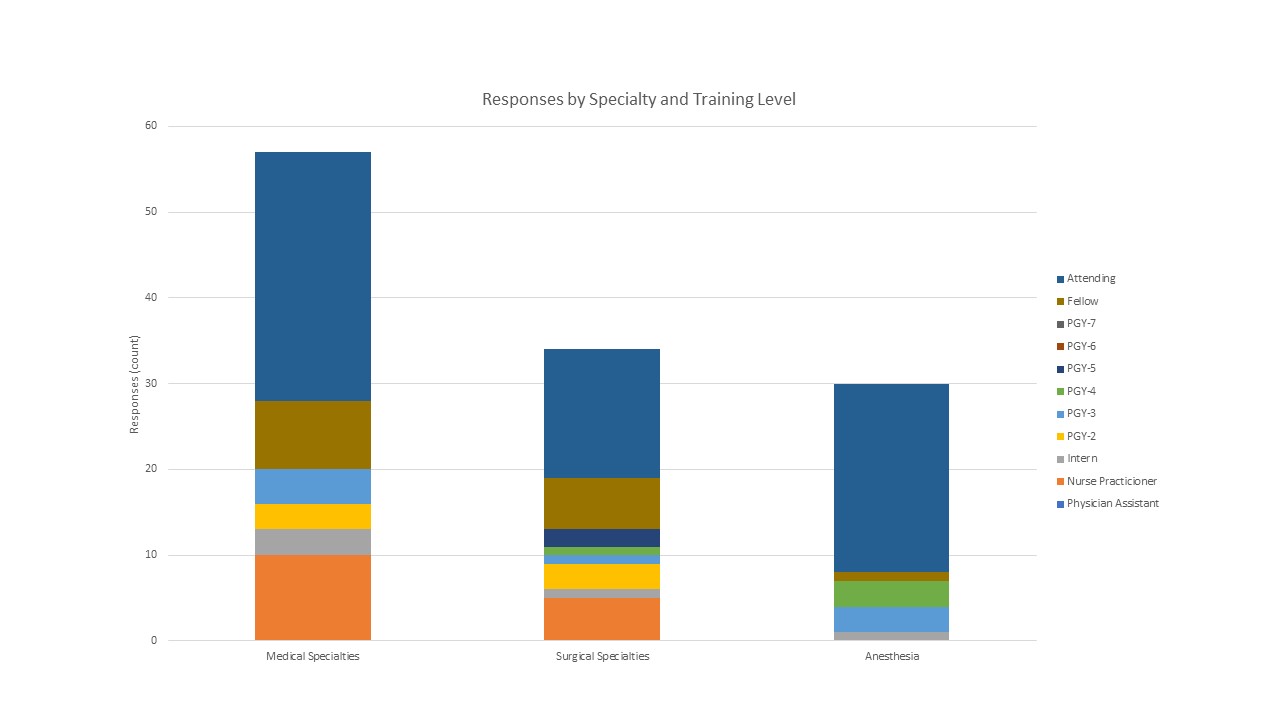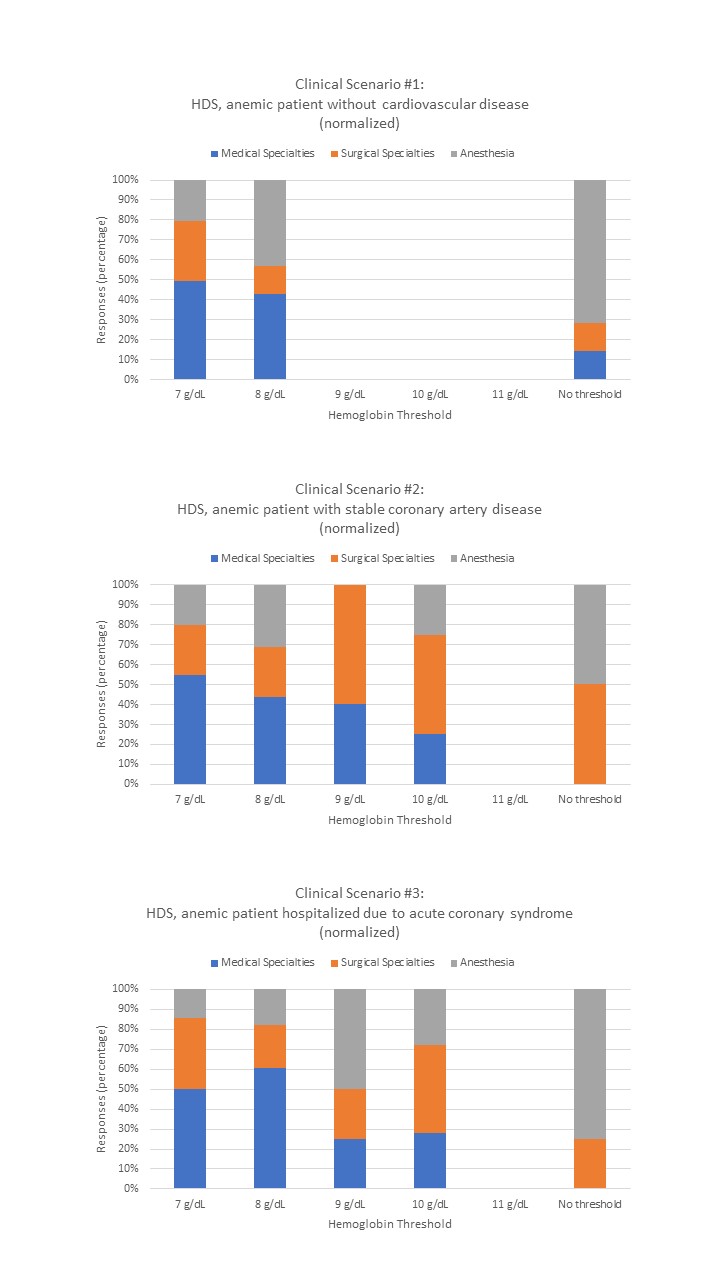Search
Presentation Details
| Transfusion Practice in Anemic Patients: A Cross Sectional Survey of Physicians and Providers at a US Academic Medical Center |
| Christina T. Bui1 & Smita K. Kalra2 1School of Medicine, University of California, Irvine, Irvine, CA, United States 2Division of Hospital Medicine, University of California Irvine Medical Center, Orange, CA, United States |
BACKGROUND: Although blood transfusions are one of the most common hospital procedures, literature shows that non-transfusion medicine physicians have poor-to-intermediate transfusion medicine knowledge (TMK). This cross-sectional survey study explores transfusion practices of physicians and advanced practice providers (APPs) across departments and training levels at a US academic medical center to evaluate adherence to current guidelines. METHODS: This study was conducted under Institutional Review Board protocol #2590. Residents, attending physicians, and APPs from medical, surgical, and anesthesia departments participated voluntarily in a 14-question Qualtrics survey. The questionnaire items covered the provider’s practice setting, diagnosis and definition of anemia, self-perceived transfusion behavior, treatment of anemia using packed red blood cells, and transfusion threshold for 3 unique clinical scenarios. RESULTS: Of the 932 recipients, 121 responses were collected (13%). Responses were classified into medical (47.1%), surgical (28.1%) and anesthesia (24.8%) specialties. Anemia in men (Hgb <13g/dL) was correctly identified by 39.7%, and anemia in women (Hgb <12 g/dL) was correctly identified by 51.2% of all respondents. In the case of anemia in a hemodynamically stable (HDS) patient without cardiovascular disease, most providers (88.4%) indicated a hemoglobin level of <7g/dL as the transfusion threshold. In the case of anemia in a HDS patient with stable coronary artery disease (CAD), 49.6% of providers indicated a threshold of <7g/dL. In the case of anemia in a HDS patient hospitalized due to an acute coronary syndrome (ACS), 54.5% of providers reported using a hemoglobin threshold of <8g/dL. CONCLUSIONS: While the transfusion threshold is widely known as 7g/dL in patients with no cardiovascular disease, providers are restrictively transfusing patients with stable CAD at a level of 7g/dL despite the AABB recommending 8g/dL. Furthermore, most providers indicated transfusing at 8g/dL for ACS despite there being no threshold recommendation. Although providers adopt restrictive transfusion strategies, further education is needed for transfusion practices in patients with CAD.   |